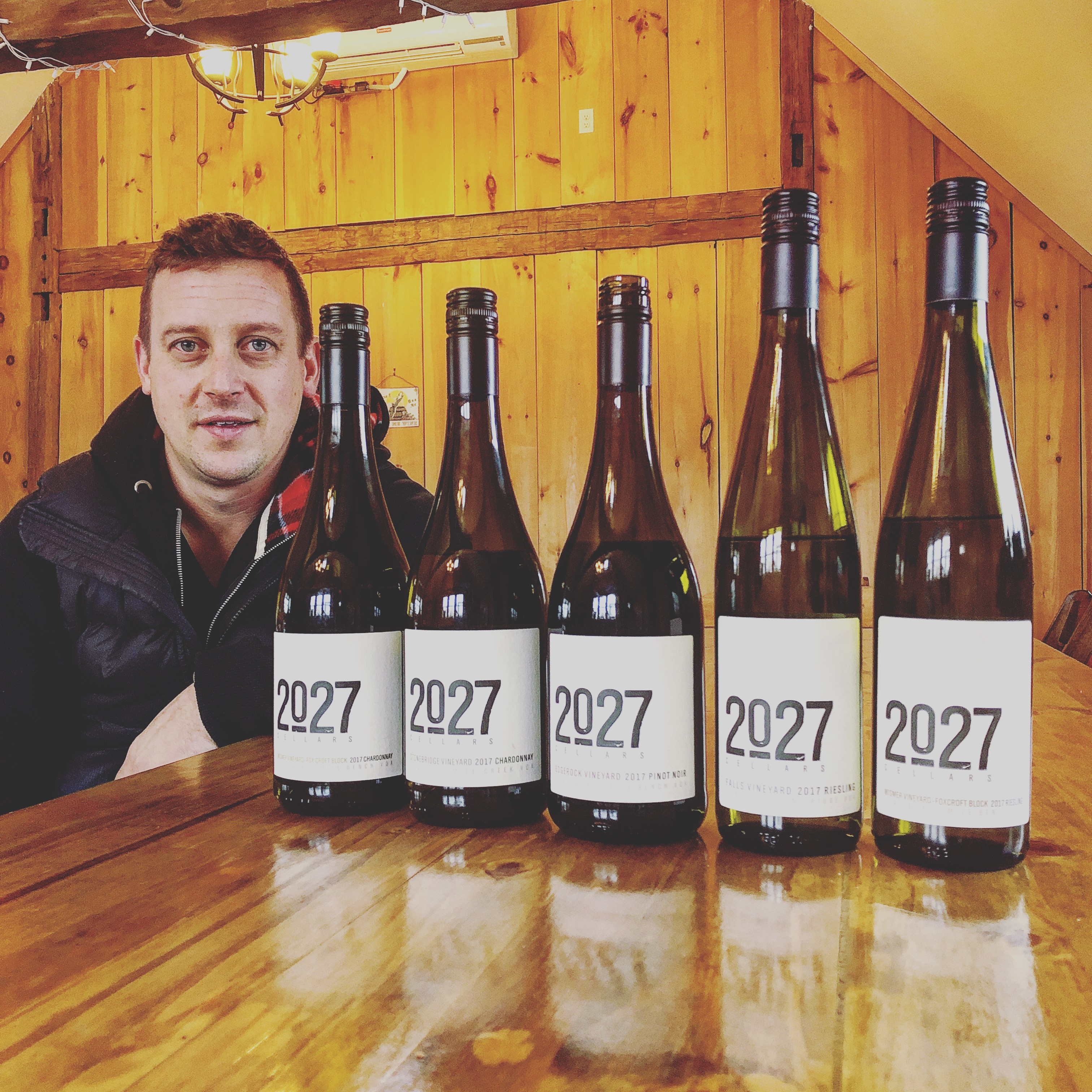
By Rick VanSickle
For 2027 Cellars winemaker and owner Kevin Panagapka, finding the sweet spot for pricing his Niagara wines has always been a moving target.
Considering what goes into his terroir-driven collection of Pinot Noirs, Chardonnays, Rieslings and sparkling wines, always sourced from top vineyards in Niagara, one would expect his wines at the higher end of the spectrum.
And they once were — mid-$20s for the Rieslings, $30 and up for the Chardonnays and $35 and up for the Pinots. But a change in license from virtual status, operating under the licence of a host winery, to acquiring his own manufacturing licence, and his philosophy on pricing has changed dramatically. Single-vineyard Chardonnays are now under $25, Pinots in the $25 range and Rieslings are all under $20.
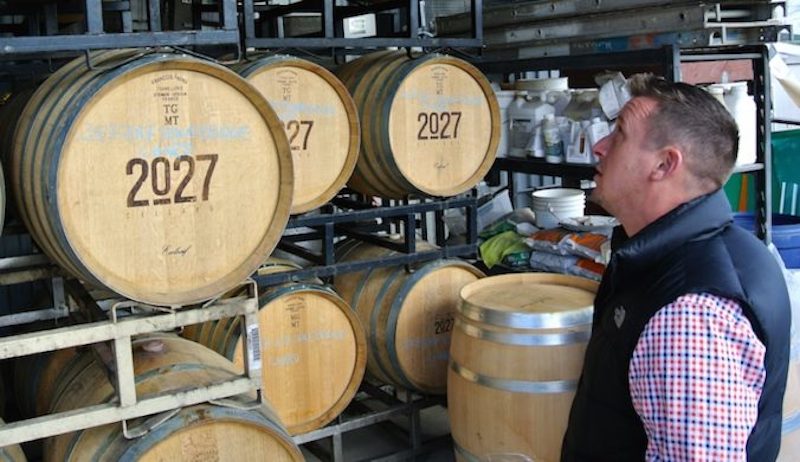
Panagapka now has the ability to sell his wines directly to restaurants and the LCBO, in the same way that other “modified” virtual wineries, such as Union and Thomas Bachelder, operate. But the downside is he can’t sell directly to consumers as he could before through a host’s retail store or online. So he had to do some deep thinking to maximize sales through the LCBO, his one shot at retailing his wines.
He wasn’t about to change the way he makes his wines — hand-harvesting, all French oak, wild ferment, hand-sorting, shoot-thinning and leaf thinning — so he lowered prices and the result has been dramatic through both the LCBO and with his licensees.
It was a big step to lower prices on the entire portfolio for the winemaker, and a scary one, as he is now at the mercy of the LCBO for future sales beyond selling directly to restaurants.
As someone who has followed Panagapka’s 2027 Cellar’s portfolio of wines from the first vintage, quality has only gotten better as he zones in on the best parcels of vines for the varietals he makes. His new batch of wines from the 2017 vintage are a reflection of the growth of these wines and certainly deserve your attention when they hit Vintages shelves or you see them on restaurant lists.
We have fresh reviews on some upcoming wines from 2027 Cellars, plus reviews on the new wines from recently purchased Calamus Winery, which Panagapka also makes, and a couple of interesting wines from the Blue Mountain producer The Roost.
2027 Cellars
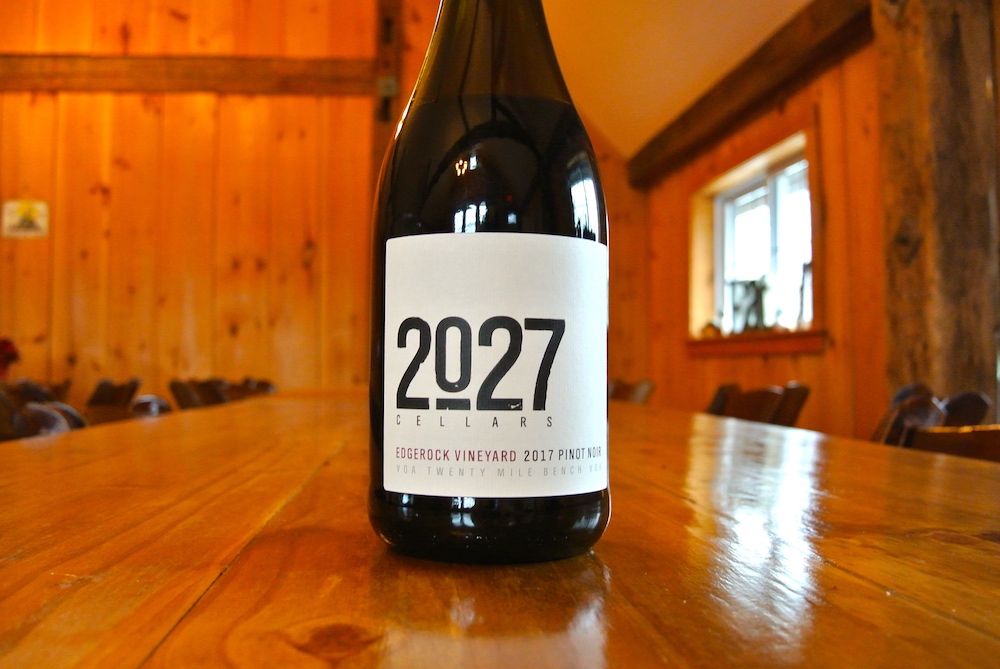
2017 Cellars Edgerock Vineyard Pinot Noir 2017 ($25, Vintages eventually, 92 points) — Edgerock Vineyard is behind Featherstone winery and is planted on a reclaimed quarry on the Twenty Mile Bench. All of Panagapka’s Pinots have the same formula: 70% whole berry pressed, French oak (14 months, 40% new barrels), wild fermented, hand harvested and hand sorted. This has such a dynamic nose of ripe cherry, rhubarb, raspberry, minerals, cinnamon/oak spice and some underbrush and bramble notes. It’s quite lively on the palate, fresh with a range of cherry and raspberry fruits, baking spices, earth and gorgeous texture through the finish. It’s extremely hard to find good Niagara Pinot at this price.
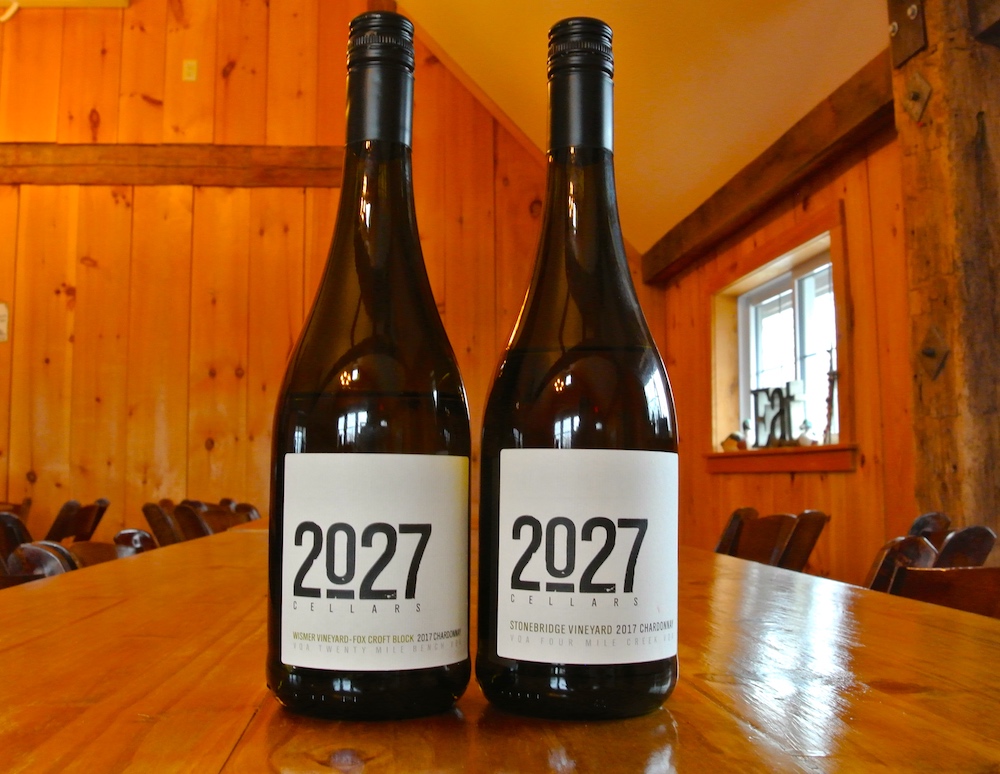
2027 Cellars Stonebridge Vineyard Chardonnay 2017 ($23, licensee only, 90 points) — From the Four-Mile Creek appellation, this is Chardonnay you will only find on restaurant lists. It has a big nose of pear, baked apple, plenty of spice and some citrus accents. It’s what I would call full-throttle Chardonnay (with Niagara flare) with juicy pear, full apple and spice on a long, finessed finish.
2027 Cellars Wismer Vineyard-Fox Croft Block 2017 Chardonnay — Wow, just wow. When Panagapka hits it, he hits it out of the park. But you will have to wait for the review of this wine. Check back in on Dec. 26, you won’t want to miss it.
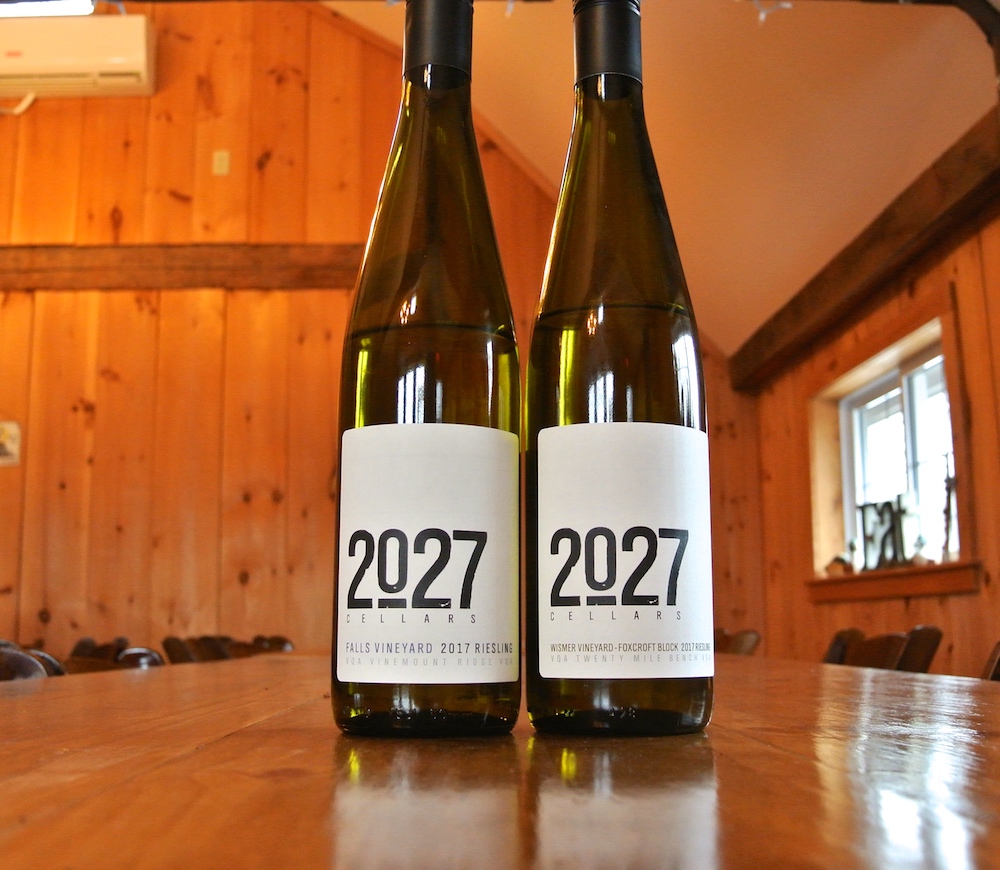
2027 Cellars Falls Vineyard Riesling 2017 ($19, Vintages eventually, 90 points) — This vineyard, located just below Calamus winery on the edge of the Ball’s Falls conservation area, has always produced wonderful Riesling for Panagapka. It’s finished with 18 g/l of residual sugar (feels like less) and 10% abv. It shows vivid lime, grapefruit, citrus, apple and minerality. It’s juicy with high tension between myriad sweet-tart fruit, ginger and minerals. Racy acidity keeps this lively and balanced through the finish. Panagapka always makes a Riesling from the Wismer-Fox Croft Block ($23, 91 points), but it’s licensee only. It’s more open knit with some tropical fruits, underlying lime/citrus and minerality.
Calamus Estate Winery
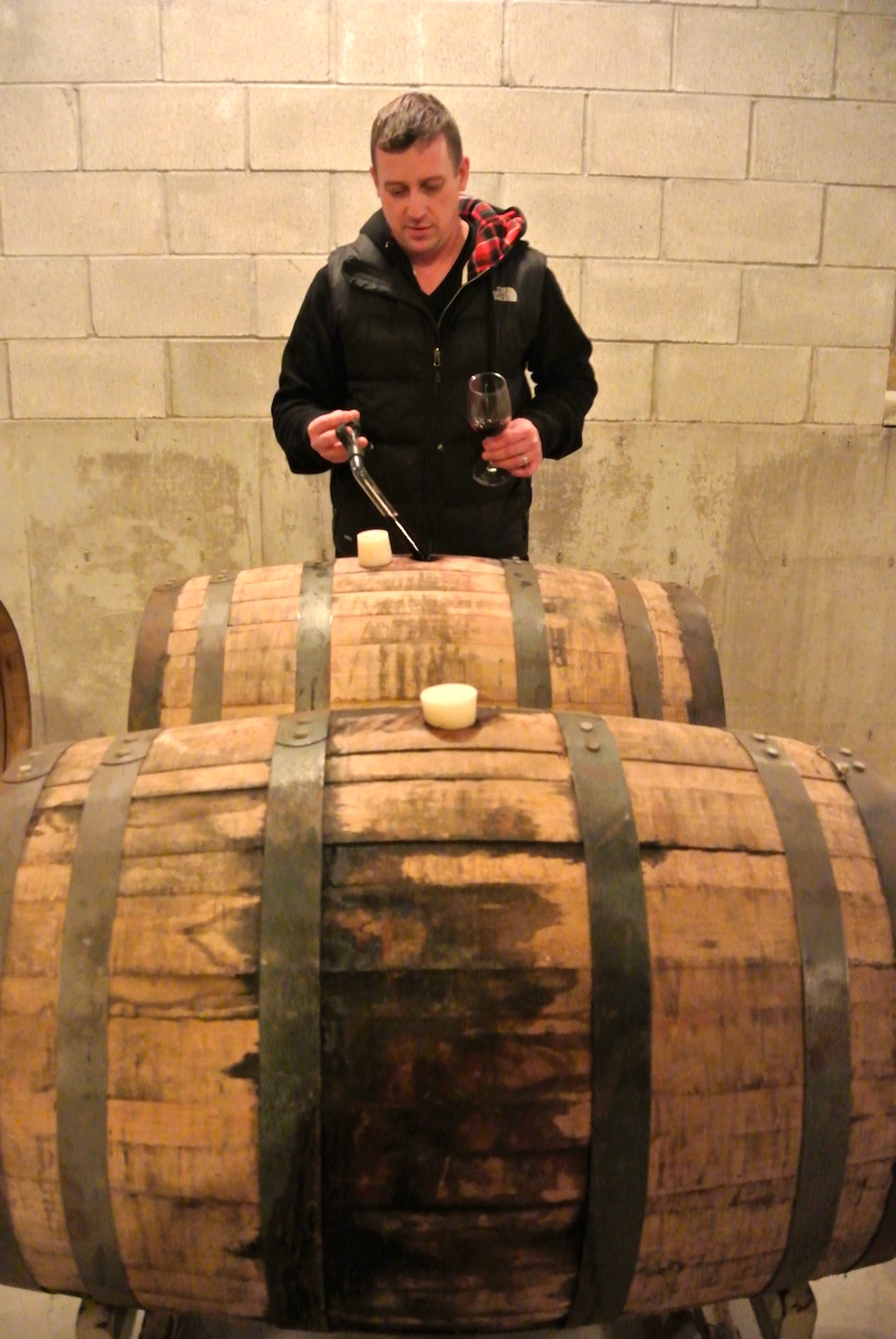
You would have to say the new owners of Calamus, Peter and Rosalee Van-Helsdingen, have hit the road running.
They only took bought the winery on Sept. 5 and moved quickly to make key renovations to enhance the property’s appeal and make the winery a destination for consumers.
Along with finishing the new barrel cellar and enlisting Panagapka to make the wines, the Van-Helsdingens, owners of Feastivities Events and Catering, have added two beautiful event spaces to the winery and launched new labels that will be consistent through the entire portfolio.
When I visited recently with Panagapka, the owners had purchased bourbon barrels (photo above) for a special bottling of red wine.
Here are some reviews for recently released wines that Panagapka either finished blending or made from scratch.
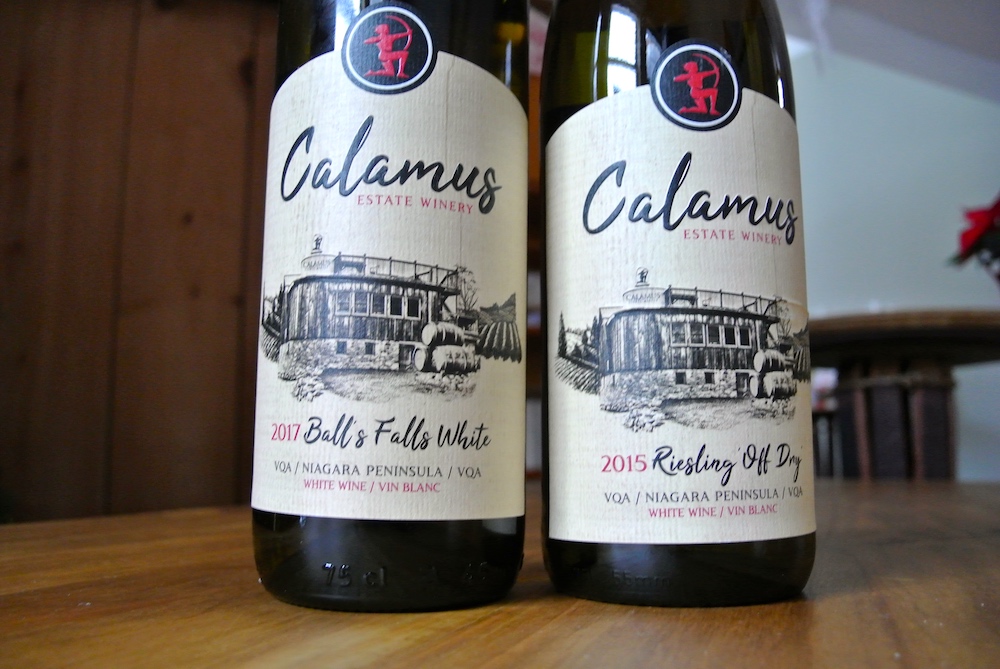
Calamus Ball’s Falls White 2017 ($15, 87 points) — A friendly blend of 50% Riesling, 30% Pinot Gris and the rest spicy Gewurztraminer. It has a fresh and inviting nose of peach, melon, grapefruit and a smidge of spice. It’s slightly off-dry on the palate with juicy, round peach and other stone fruits with just enough acidity to keep it fresh through the finish.
Calamus Off-Dry Riesling 2015 ($16, 88 points) — A honeyed nose of pear, peach and citrus with mineral/ginger accents. Not overly sweet on the palate and balanced by racy acidity with sweet/tart orchard fruits, minerals and wild honey.
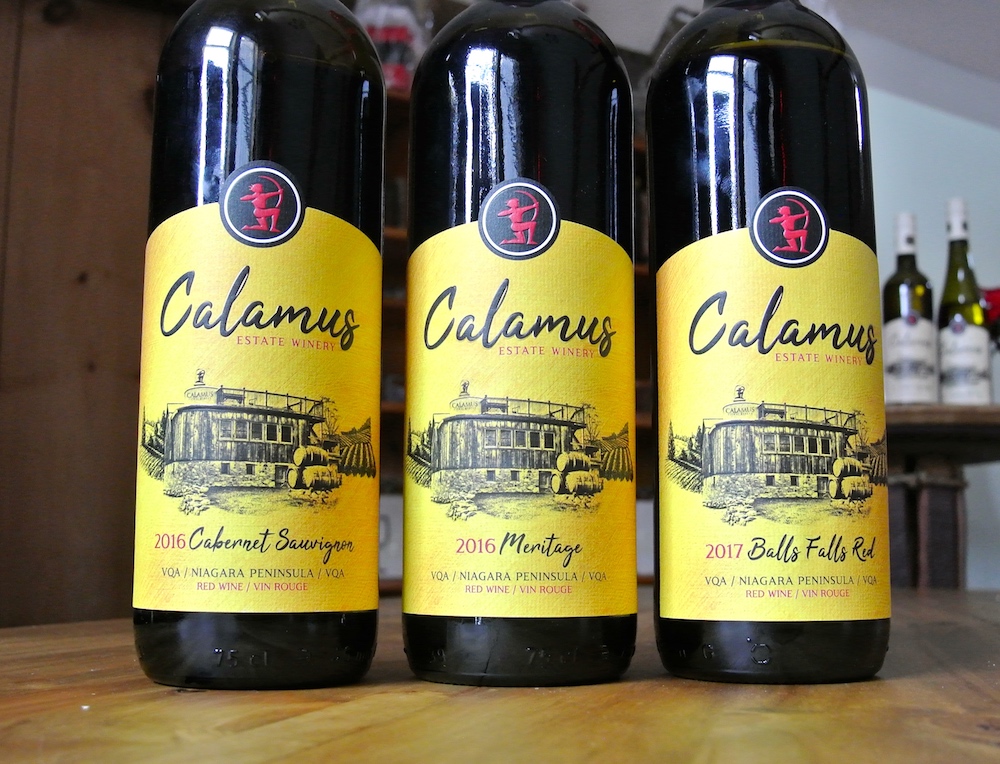
Calamus Ball’s Falls Red 2017 ($16, 88 points) — The house red from Calamus is a blend of 85% Cabernet Franc and 15% Cabernet Sauvignon that spends 12 months in French barriques, 40% of which is new. The nose displays bright red berries, cassis, black currants and spice. The red fruits are layered on the palate with some smoky/earthy notes, subtle tannins and nicely spiced through the finish. For near-term drinking.
Calamus Meritage 2016 ($20, 90 points) — This 50% Cabernet Sauvignon, 50% Cabernet Franc hits all the right notes. A gorgeous nose of rich, thick dark fruits, elegant spice, subtle graphite … just a lovely entry. It has a structured feel on the palate, a bevy of dark and red fruits, firm(ish) tannins, spice and length through the finish. You couldn’t ask for anything more from a $20 Meritage red blend in Niagara.
Calamus Cabernet Sauvignon 2016 ($25, 88 points) — A bit tight at the moment with a meaty/smoky nose that shows earthy dark fruits with cherry/raspberry notes peeking through the barrel spices. It shows firm tannic structure on the palate with dark and red fruits, meaty/earthy accents and loaded with spice. Best to cellar 2+ years and wait for it to balance out a bit.
Two from The Roost
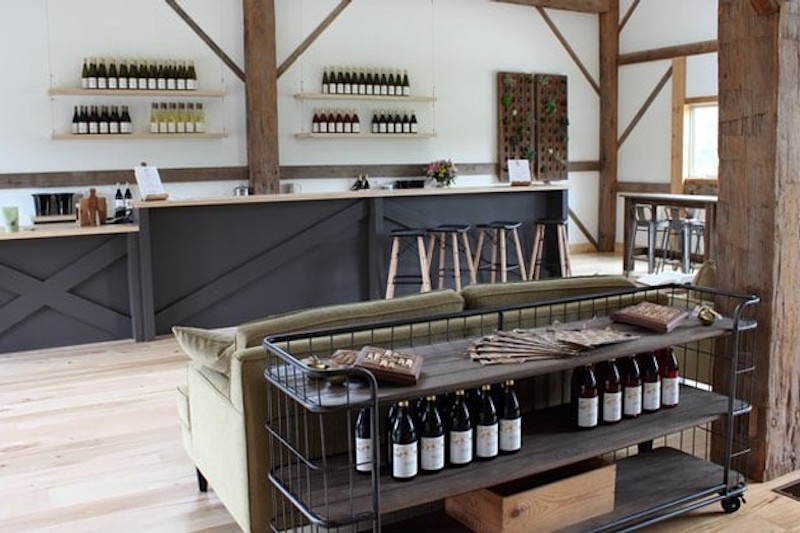
I tried a couple of interesting wines from The Roost at Red Wing recently.
The Roost is located on a hilltop near Ravenna, Ont., with views of Georgian Bay and 20 minutes from Collingwood and Thornbury. The small winery makes a collection of wines mainly from estate hybrid fruit that includes the flagship Marquette, white L’Acadie and Frontenac Blanc and other hybrid grapes and blends that grow so well in the cooler wine climates of Ontario outside the major growing regions.
The winery is the fulfilment of a dream for husband-and-wife team Michael and Jessica Maish. Together the pair do everything from tending the vines to making the wine.
Any winery in Ontario that is championing those grapes suited to the climate of their site, despite the obstacles, deserves our attention. I will be making an effort to visit the Blue Mountains to see these wines up close when the winery re-opens in May.
Here’s a couple I liked (the Sparkling Red is available online only here while the white wine is sold out):
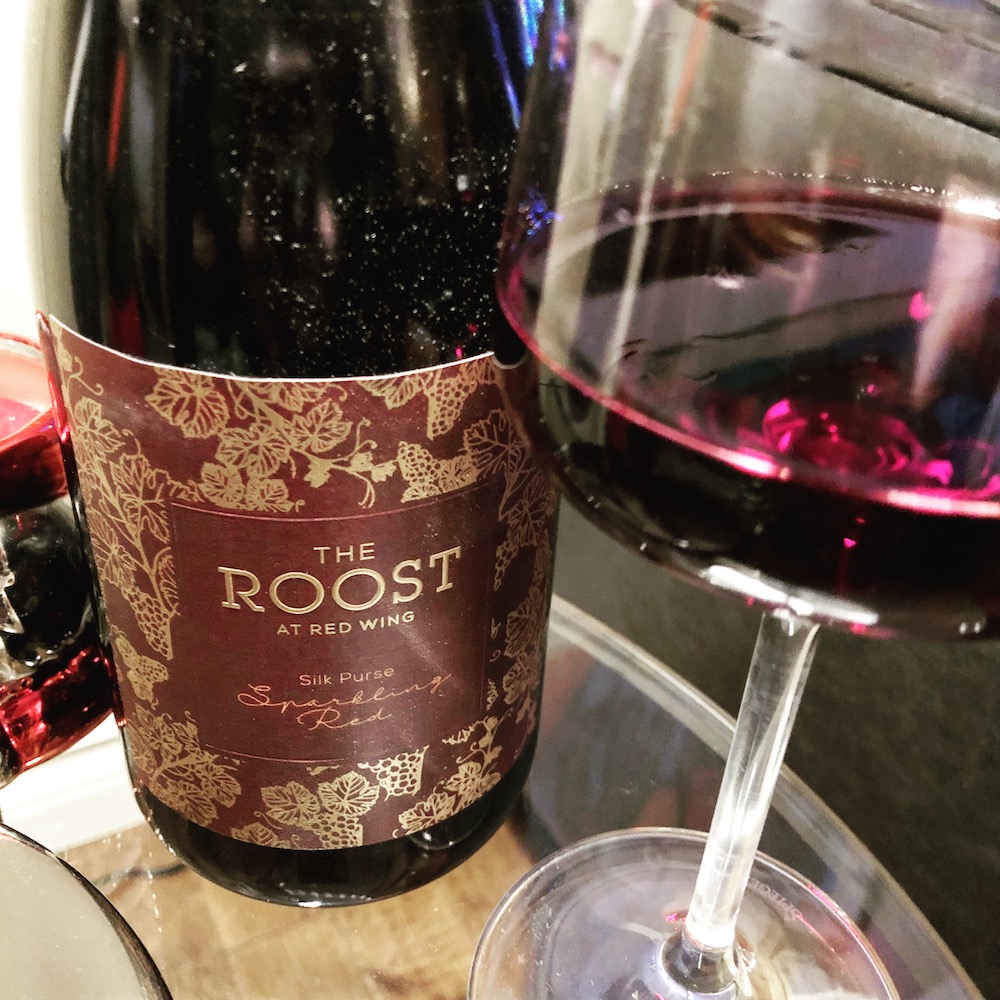
The Roost Silk Purse Sparkling Red 2017 ($45, available online) — Made in the traditional method exclusively from cold climate varieties Lucy Kuhlman and Petite Pearl. The first thing you notice is the colour — a deep purple from some skin contact — then the rich aromas of blackberries, blueberries, smoke, bramble, black currants and spice. This is a big, bold sparkler made in the traditional method with a lively mousse. On the palate, it feels nice and dry with flavours ranging from blackberries and blueberries to licorice, anise and spice all lifted by freshening acidity. And, yes! It’s the only Lucy Kuhlman/Petite Pearl TM sparkling wine being made in Ontario … and maybe the world.
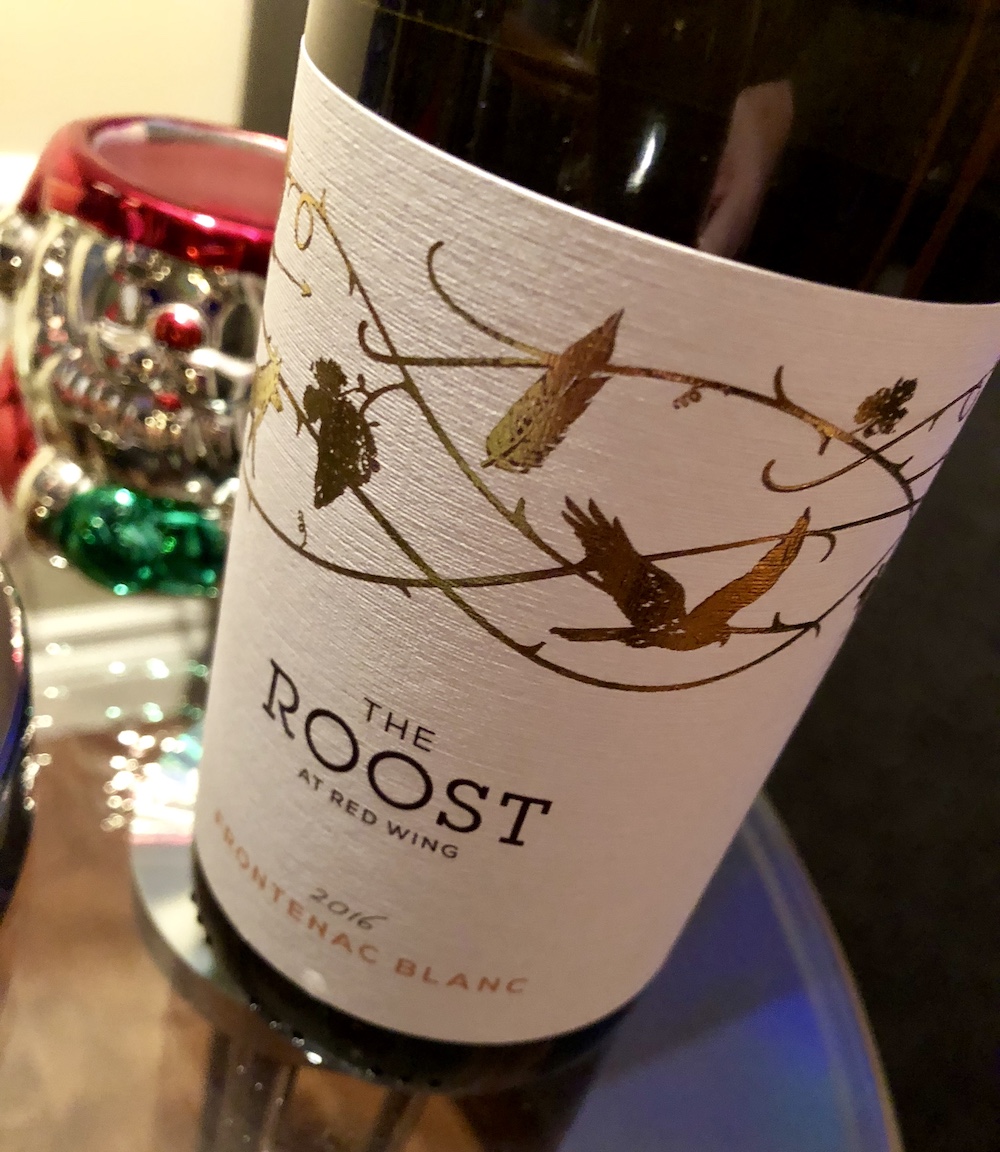
The Roost Frontenac 2016 ($25) — This white is highly unique with a nose of fresh wild flowers, apricot, light peach and ocean breeze/saline notes. It’s made in an off-dry style but feels balanced on the palate with flavours of peach, apricot and grapefruit with lemon accents on the finish.


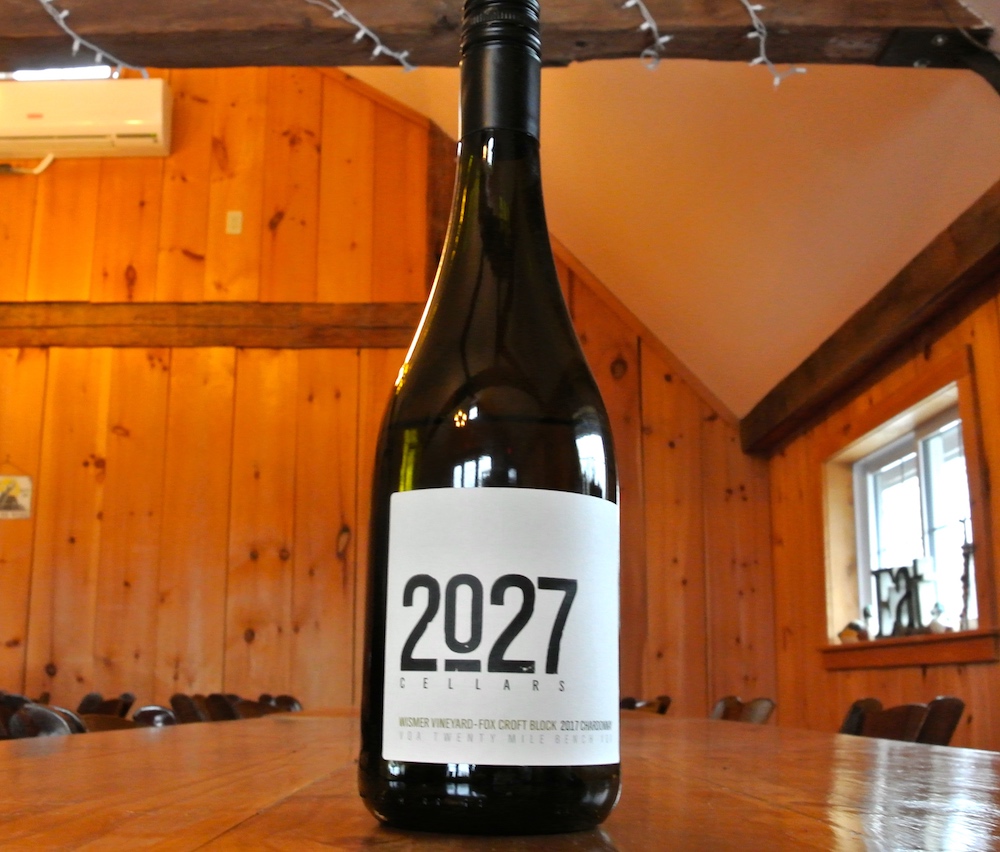



Rick, I think you should have mentioned that former winemaker, Arthur Harder, made most of the Calamus wines you are reviewing. He deserves the credit.
Fred, Should wine writers then, for example, mention previous winemakers who started wines at a winery but were finished by a different winemaker? Let’s say David Sheppard took over from Jay Johnston at Flat Rock and inherited all the barrels of wine that Jay started, or, all the base wines for the sparkling program, should it be noted that David only finished those wines and Jay started them? No, of course not. As mentioned in the post, Kevin Panagapka finished the wines reviewed and thus is the winemaker of record at Calamus. Winemakers inherit wines all the time, but if they finish them and get into bottles, it’s essentially theirs … even if the wine was put into a barrel years before.